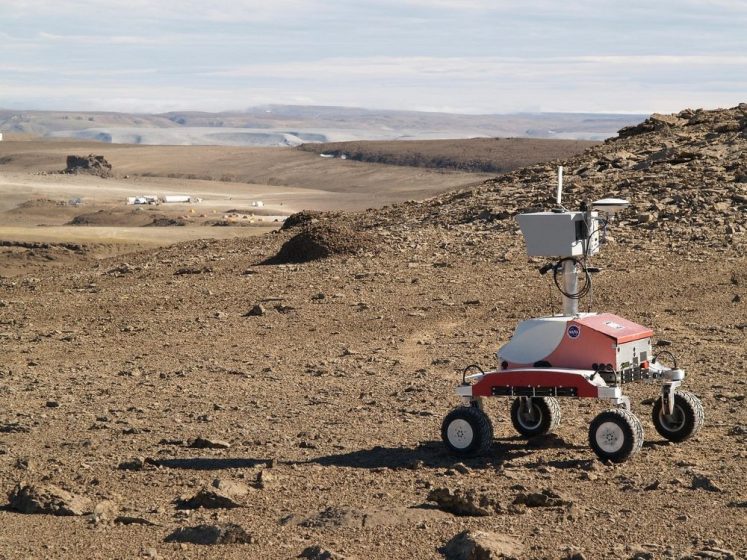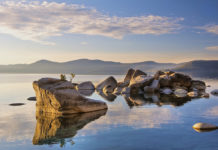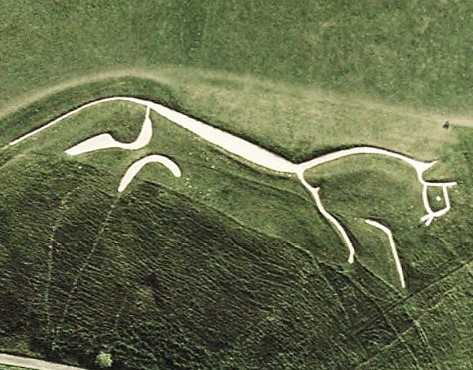Devon Island is the largest uninhabited island in the world. This is situated in Baffin Bay, Qikiqtaaluk Region, Nunavut, Canada. It is one of the largest members of the Canadian Arctic Archipelago, and the 2nd largest of the Queen Elizabeth Islands. This is Canada’s 6th-largest island and the 27th-largest island in the world. It has an area of 55,247 km2 slightly smaller than Croatia.
The bedrock is Precambrian gneiss and Paleozoic siltstones and shales. The highest point is the Devon Ice Cap at 1,920 m which is part of the Arctic Cordillera. Devon Island contains numerous small mountain ranges, such as the Treuter Mountains, Haddington Range, and the Cunningham Mountains. The distinguished similarity of its surface to that of Mars has attracted interest from scientists.

In the early 16th century, Robert Bylot and William Baffin were the first Europeans to sight the island. After Devon in England, the name was changed to Devon Island by the end of the 1800s. In 1924, an outpost was established at Dundas Harbour. That was leased to Hudson’s Bay Company in 1933. The collapse of fur prices led to the dispersal of 53 Baffin Island Inuit families on the island in 1934. It was considered a disaster due to wind conditions and the much colder climate, and the Inuit chose to leave in 1936.
Dundas Harbour was populated again in the late 1940s, but it was closed again in 1951. Only the ruins of a few buildings remain. Because of its relatively high elevation and its extreme northern latitude, it supports only a meager population of muskox and small birds and mammals; the island does support Hypolite communities. This island is the most interesting place on planet earth, as its desert setting and severe climate are very alike to conditions on Mars.

Animal life is concentrated in Truelove Lowland a polar oasis area of the island, which has a favorable microclimate and supports relatively lush Arctic vegetation. The green area supports animal life, such as foxes, muskoxen, and polar bears. The ground remains frozen for almost the entire year, however temperatures during the brief (35 to 55 days) growing season rarely exceed barely 8 °C, and in winter it can plunge to as low as −55 °C.
With a polar desert ecology and a glacier in the vicinity. Devon Island Canada receives very little rainfall. In simple words, Devon Island Canada is a wasteland. Cape Liddon is an Important Bird Area (IBA) noteworthy for its black guillemot and northern fulmar populations.
Cape Vera, another IBA site, is also noted for its northern fulmar population. Devon Island is also distinguished for the presence of the Haughton impact crater, created some 40 million years ago when a meteorite about 2 km in diameter crashed into what were then forests. The impact left a crater around twenty-three km in diameter, which was a lake for several million years.
In 1960, The Devon Island Research Station was established, and it is maintained by the Arctic Institute of North America. It is in Truelove Lowland, on the northeast coast of Devon Island. The Flash line Mars Arctic Research Station project entered its third season in 2004.
Since 2004, this Island became a brief home for five researchers and two journalists, who were to use the Mars-like environment to simulate living and working on that planet. The year 2007 was the longest simulation period that consists of 20 scientific studies. Diesel-powered generators supply power to the cabins as required; a tool shed and “sauna” are on site.

The Haughton crater is now considered one of the world’s best Mars analog sites. It is the summer home to NASA’s complimentary scientific program, the Haughton–Mars Project. HMP (Haughton Mars Project) has conducted geological, hydrological, botanical, and microbiological studies in this punitive environment since 1997. HMP-2008 (Haughton Mars Project was the twelfth field season at Devon Island.
In 2007, fossils of the seal ancestor were found on the island. On July 16, 2013, the Canadian Space Agency assigned Canadian astronaut Jeremy Hansen to secondment with the Centre for Planetary Science and Exploration of the University of Western Ontario at Haughton Crater in preparation for a potential future manned exploration of Mars, the Moon, or the asteroids.
Related Reading – Cleft Island







